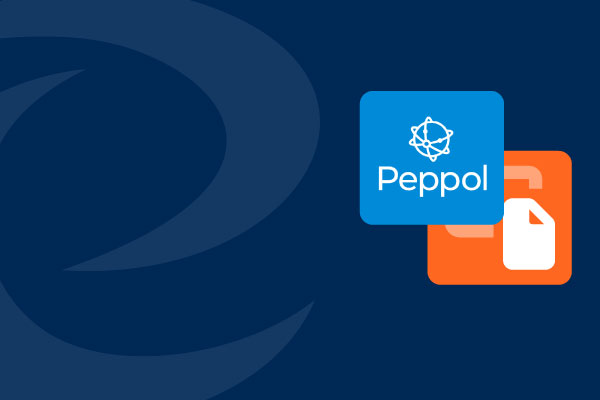Peppol vs EDI: What’s the Difference?

September 4, 2025
Many companies today face the decision of whether to use newer networks such as Peppol or standard EDI formats like EDIFACT and ANSI X12 when modernising their supply chain and invoicing processes.
While both enable electronic data exchange, the EDI vs Peppol debate often comes down to cost, compliance, and how easily you can connect with trading partners.
Traditional EDI has been the backbone of B2B communication for decades, but as companies explore EDI alternatives, especially for cross-border transactions and public procurement, Peppol is emerging as a powerful, standardised solution. In this guide, we’ll break down the differences, compare features in detail, and help you choose the right fit from the growing list of alternatives to EDI.
What is Traditional EDI?
Electronic Data Interchange (EDI) has been around for decades. It uses structured message standards like EDIFACT (European) and ANSI X12 (in the US) to enable companies to exchange purchase orders, invoices, and ASNs (Advanced Shipping Notices) electronically. Traditional EDI back in the days, required point-to-point connections between trading partners or through a Value-Added Network (VAN).
What is Peppol?
Peppol (Pan-European Public Procurement Online) is a secure, standardised eDelivery network originally developed for European public procurement but now used globally. It leverages UBL (Universal Business Language) formats and an open, interoperable four-corner model, so organisations can send and receive e-documents without custom point-to-point connections. Read more in our blog with all the information you need to know about Peppol.
Peppol vs EDI: Balanced Comparison
| Feature / Criteria | Peppol | Traditional EDI |
| Message Standards | UBL (Universal Business Language) | ANSI X12, EDIFACT, TRADACOMS, and other widely adopted industry standards |
| Interoperability | High – any Access Point can connect across the Peppol network | Strong within established partner networks and industry sectors |
| Cost Structure | Lower initial setup cost – single Access Point connection covers all partners | Investment varies – may be higher initially, but scalable for large volumes and complex supply chains |
| Compliance | Built-in alignment with EU public procurement and many national regulations | Proven compliance in multiple industries and geographies; adaptable to regional standards |
| Onboarding New Partners | Fast – minimal technical setup required for each partner | Efficient for existing network participants; setup ensures customised, partner-specific integration |
| Global Reach | Expanding rapidly beyond Europe into Asia-Pacific and other markets | Long-established global adoption across multiple industries |
| Security | Secure digital certificates and identity verification via Access Points | Robust security through network provider protocols and encryption standards |
When to Use Peppol vs Traditional EDI Systems
Choosing between EDI vs Peppol depends on your organisation’s size, market reach, compliance needs, and existing technology landscape.
When Peppol is the Better Choice
- Public Procurement: If you supply goods or services to government agencies in regions that mandate Peppol (e.g., Belgium).
- Regulatory Alignment: Peppol’s standardised formats and built-in compliance checks make it an attractive investment.
- Cross-Border VAT & Tax Compliance: Because Peppol formats and processes are designed with international trade in mind, many implementations already integrate with real-time tax clearance models, reducing compliance overhead.
When Traditional EDI Makes Sense
- Long-standing Industry Standards: If your industry already mandates ANSI X12, EDIFACT or Tradacoms (e.g. retail, manufacturing logistics).
- Established Partner Network: Large organisations with existing EDI infrastructure may find migration costs high.
- Complex Custom Data Requirements: When transactions require heavily customised document formats.
- Global Coverage Beyond Peppol Regions: If you work with trading partners in markets where Peppol adoption is minimal.
EDI Alternatives: When to look at Peppol
As businesses look to overcome compliance challenges, particularly when doing business with governmental bodies, Peppol is often the first choice, but not the only one.
Peppol’s combination of universal connectivity, low onboarding costs, and regulatory alignment gives it an edge for many businesses. Organisations looking to meet certain requirements where EDI on its own won’t do, then Peppol can be an attractive solution.
Using EDI and Peppol Together
While the Peppol vs EDI conversation often sounds like an “either-or” choice, many organisations successfully run both in parallel. In fact, using EDI and Peppol side by side can offer the best of both worlds:
- Maintain Existing EDI Relationships: Large enterprises with established EDI connections can keep using them for high-volume, industry-specific trading partners.
- Add Peppol for Public Sector & Cross-Border Partners: Peppol can handle transactions with government agencies and suppliers in countries where Peppol e-invoicing is mandated or preferred.
- Integrate Through Middleware: Many integration platforms and ERP systems now offer connectors for both EDI and Peppol, allowing automated routing based on partner requirements.
- Flexible Partner Onboarding: If a new partner is Peppol-enabled, you can onboard them quickly via the network; if they’re on EDI, your existing connections still apply.
- Unified Compliance Strategy: Running both channels ensures you stay compliant with varying regional and sector-specific regulations.
For businesses operating in diverse markets, blending EDI vs Peppol into a single, coordinated strategy means you don’t have to choose one EDI alternative over another, you simply match the right tool to the right partner.
Key Takeaways
- Peppol vs EDI is not a simple “one is better” situation, the right choice depends on your partners, industry, and compliance needs.
- Peppol offers open interoperability, lower costs, and built-in compliance for many government and cross-border transactions.
- Traditional EDI remains dominant in industries with entrenched standards and global supply chains outside the Peppol network.
If you want to explore how Peppol could work for your business, get in touch with us and let’s talk about the possibilities.
Share this post:
Stay ahead of the competition
Get expert supply chain insights delivered directly to your inbox weekly.